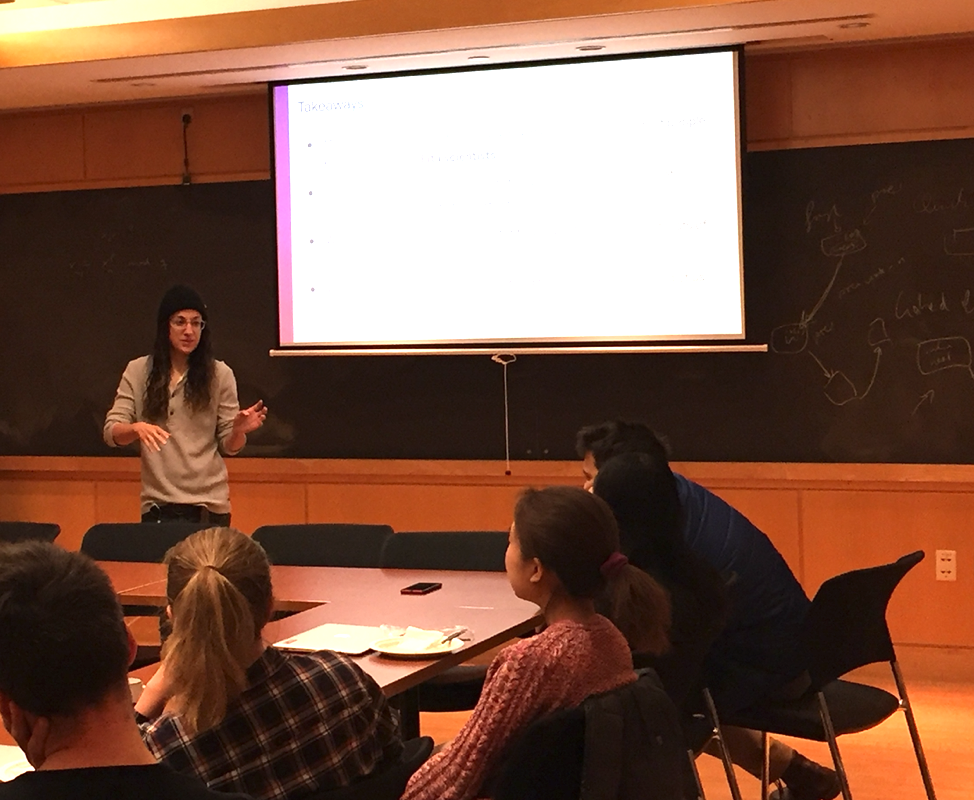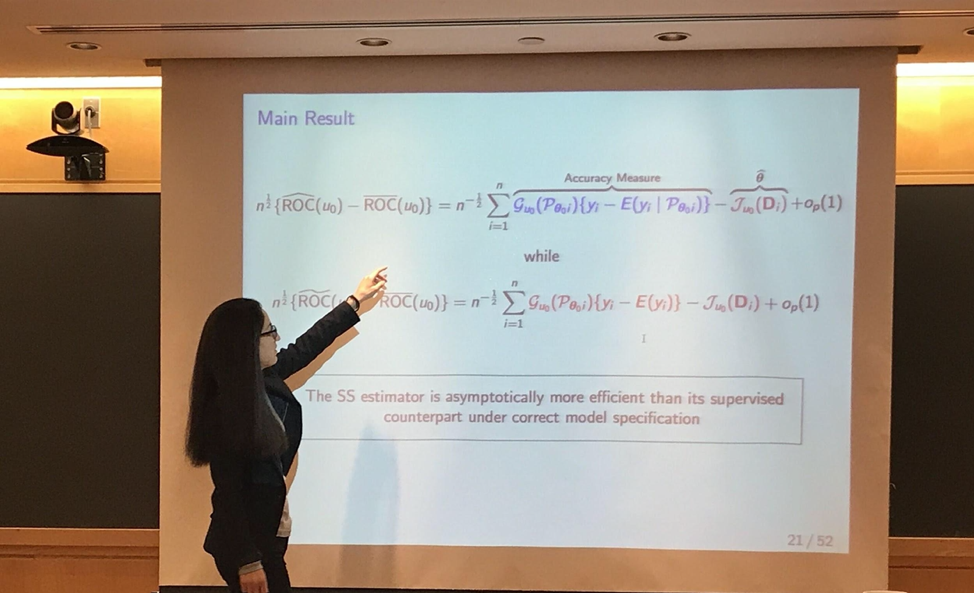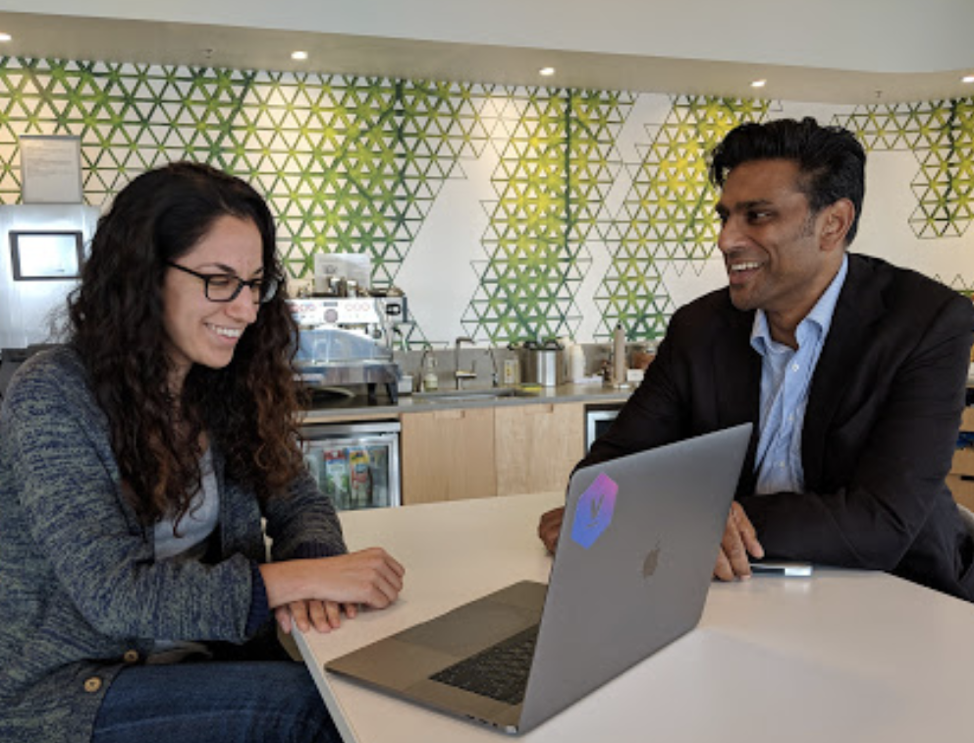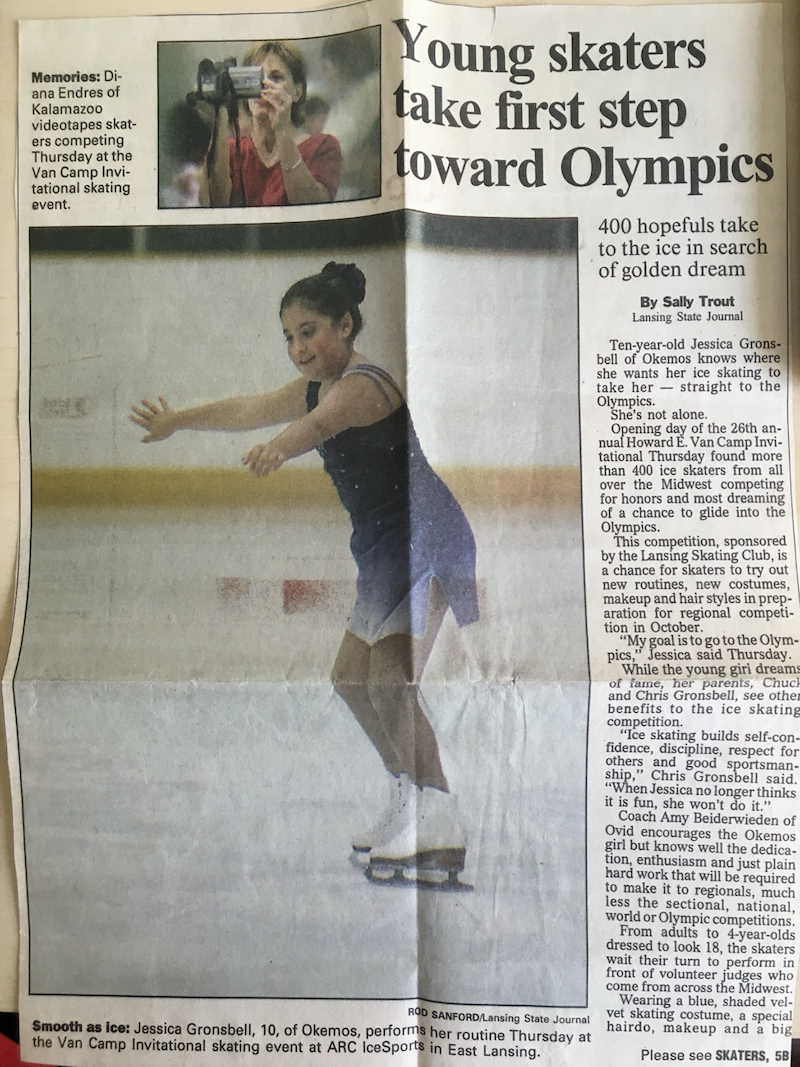With a PhD in Biostatistics from Harvard University, where she was supported by a Ruth L. Kirschstein Predoctoral Individual National Research Service Award from the National Institutes of Health, Jesse's research has a focus on the development of statistical methods for electronic health records and mobile health data. Her work has been recognized with a Young Researchers Award from the International Society of Nonparametric Statistics and a Gertrude Cox Scholarship honourable mention from the American Statistical Association.
U of T Statistical Sciences: Welcome to the StatsSci team and congrats on your new role! What got you interested in U of T and the Stats Department?
Thanks so much! I am humbled to be joining the Stats department and can’t wait to get started. For me, the decision to come to U of T was an easy one. Within the department and across the university, researchers are doing groundbreaking work at the intersection of medicine, statistics, and machine learning. This unique mix of technical talent and strength in clinical research makes U of T an ideal place for a biostatistician like myself. Also, personally and politically, I am really excited to move to Toronto.

Can you tell us a bit more about your background?
It’s ironic that I entered academia because I wasn't sure if college was right for me. When I graduated high school, I got a job as a line chef at a Mexican restaurant because I love to cook. Unfortunately, I was quickly fired after destroying an industrial-sized batch of guacamole. Since my chef dreams were crushed (along with a ton of avocados), I decided to give college a try.
I took a discrete mathematics course my sophomore year that led me to major in math. While I enjoyed theoretical classes, I was drawn to how math could be used to formalize, provide structure to, and ultimately solve real world problems — particularly those in high-impact fields like medicine. This interest led me to take courses in biostatistics and pursue a PhD in the field.
I was fortunate to do my graduate work under the supervision of Dr. Tianxi Cai at Harvard, then spend a year as a postdoc at Stanford with Dr. Lu Tian. Currently, I’m a data scientist at Alphabet’s Verily Life Sciences on the mental health research and development team led by Dr. Menachem Fromer. After having a taste of life in industry and with the encouragement of these amazingly supportive mentors, I am happy to have found my home back in academia at U of T.
Within the Department [of Statistial Sciences] and across the university, researchers are doing groundbreaking work at the intersection of medicine, statistics, and machine learning. This unique mix of technical talent and strength in clinical research makes U of T an ideal place for a biostatistician like myself.
Moving from Boston to Toronto in the middle of all the current restrictions – I can’t imagine how stressful that might be! What are you most looking forward to about life in Toronto?
It’s difficult to digest the disruption that this pandemic has caused. The restrictions complicating my physical move are a small problem to have right now. I am beyond lucky to have the opportunity to pursue my dream job during this time and grateful to have something to look forward to!
Academically, I am eager to fully re-engage with my research after being in industry for the last few years. Personally, I’m looking forward to the adventure of living in such a large and diverse new city.

What do you love about statistics?
John Tukey said it well, “The best thing about being a statistician is that you get to play in everyone’s backyard.” In my short career, I have had the opportunity to apply statistics to baseball pitch classification, ballistic missile defense, and disease diagnosis. It is exciting to have a skill that is applicable to many different fields and in turn allows you to continuously learn something you otherwise never would have encountered. I think it’s really fun to work with experts in other domains to figure out the right problem to solve and the appropriate statistical framework to do it.
What courses will you be teaching this Fall?
I found out yesterday I will be teaching STA2112H, Mathematical Statistics I. Nancy Reid will be teaching the second half of the course in the Spring so I am excited to collaborate with her.
COVID-19 is new, and the knowledge base of the virus is just beginning to be built. This limits the kinds of statistical analyses that can be conducted and the conclusions that can be drawn. [...] One of the great advantages of EHR [electronic health record] data is that it allows for rapid consolidation of large amounts of clinical data from affected countries.
Can you tell us about your current research interests?
I develop statistical and machine learning methods to understand the digital phenotype - the health information that is left behind in the digital data we generate in our everyday lives. Most of my work is centered on routinely collected clinical data in the form of electronic health records (EHR) and more recently on mobile health data captured from a smartphone. Both of these data sources hold great potential in furthering our understanding of health and disease outside of traditional clinical studies. However, the data is captured in situ and as result, is of lower quality than what we would gather in a controlled study. This often prohibits the use of standard analysis methods and paves the way for statisticians like myself to develop new methods to better accommodate the data.

Like you said, your research has focused on electronic health records data. Does EHR data have potential to shape our understanding of COVID-19?
That is a great question and I think the honest answer is that researchers are still figuring it out. It is important to remember that scientifically, COVID-19 is new, and the knowledge base of the virus is just beginning to be built. This limits the kinds of statistical analyses that can be conducted and the conclusions that can be drawn.
That being said, one of the great advantages of EHR data is that it allows for rapid consolidation of large amounts of clinical data from affected countries. In fact, The Consortium for Clinical Characterization of COVID-19 by EHR (4CE) has recently published an article that investigates data covering over 27,000 COVID-19 cases from 96 hospitals in the US, France, Italy, Germany, and Singapore. The team was able to wrangle an enormous amount of data and summarize findings in under two weeks. This impressive effort demonstrates the power of EHR data to enable studies of evolving diseases like COVID-19. However, these large-scale analyses are most effective in complementing and potentially validating traditional clinical research studies due to inherent limitations of EHR data, such as only capturing patients who are ‘sick enough’ to go to the hospital and lacking information on important environmental factors.
At the population level, I’m excited by public health monitoring apps. [...] Aggregated user data is helping to find new hotspots of the virus and to identify populations who may be at higher risk of getting sick.
What about smartphone data?
At the population level, I’m excited by public health monitoring apps. In particular, the HowWeFeel (HWF) app allows users to report demographic and symptom information in as little as 30 seconds, as well as see how people near to them are feeling. Aggregated user data is helping to find new hotspots of the virus and to identify populations who may be at higher risk of getting sick. And as an added plus, HWF will donate a meal to people in need through Feeding America with each new download.
Things are more challenging at the individual level. With the recent rise in telemedicine, there is a lot of interest in developing markers from the smartphone that can be used to capture health status between visits, particularly in mental health. However, there isn’t a one-to-one mapping between the markers that were useful pre-pandemic and those that are useful during the pandemic. For instance, daily GPS data can be transformed to identify periods with semantic meaning such as ‘home’, ‘work’, and ‘commute’. A change in someone’s routine can indicate a shift in mental health status. But with most people spending most of their time at home, many of the markers that we once relied on now have almost no variability. It will be interesting to see the developments in this space in the coming months.
What do you hope to accomplish in your tenure at U of T?
There’s a lot I want to accomplish, but two things immediately come to mind.
For one, I’m eager to bring my experience in industry to my research, teaching, and mentoring. One of the biggest differences between academia and industry is the speed with which a statistics or machine learning problem is translated from paper to production. I hope to develop a research program that effectively bridges the theoretical and the practical, and to do the same in my teaching. As a student I was unsure about the decision between industry and academia, so I can also offer some guidance to students at U of T.
The second goal I have is personal. I am the first in my family to receive a college degree and my path to this point hasn’t been easy. It is important for students to know that there is no single path to success and I think it’s necessary for faculty to speak to that. My experiences have made me passionate about encouraging the traditionally underrepresented to pursue higher education. Last year, I spoke at the annual ACM Richard Tapia Celebration of Diversity in Computing Conference that brings together students and professionals in computing from all backgrounds and ethnicities. I am now using some of my spare time during the stay-at-home order to review proposals for next year’s doctoral consortium. I’m looking forward to engaging in (or even developing) programs like these as a faculty member at U of T.
As a student I was unsure about the decision between industry and academia, so I can also offer some guidance to students at U of T. It is important for students to know that there is no single path to success and I think it’s necessary for faculty to speak to that.
Do you have some fun facts about yourself you could share? What do you do in your free time to unwind? Any interesting hobbies?
I moved a lot as a kid and spent a number of years in Fargo, North Dakota. While I was there, I took up competitive figure skating and still enjoy hitting the ice from time to time. I have also been distance running for 15 years and hate to go a day without getting in a few miles. And as I mentioned, I love to cook - just not on the line.

© 2020 U of T Statistical Sciences


